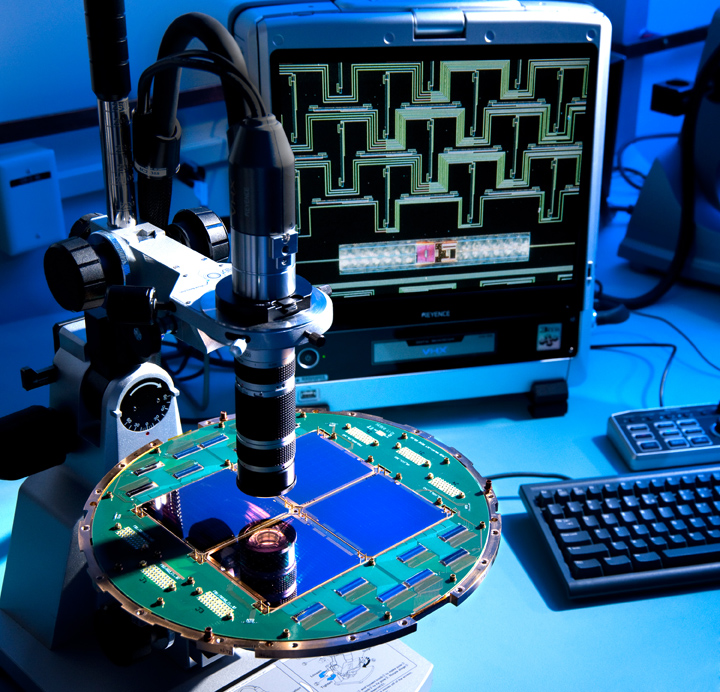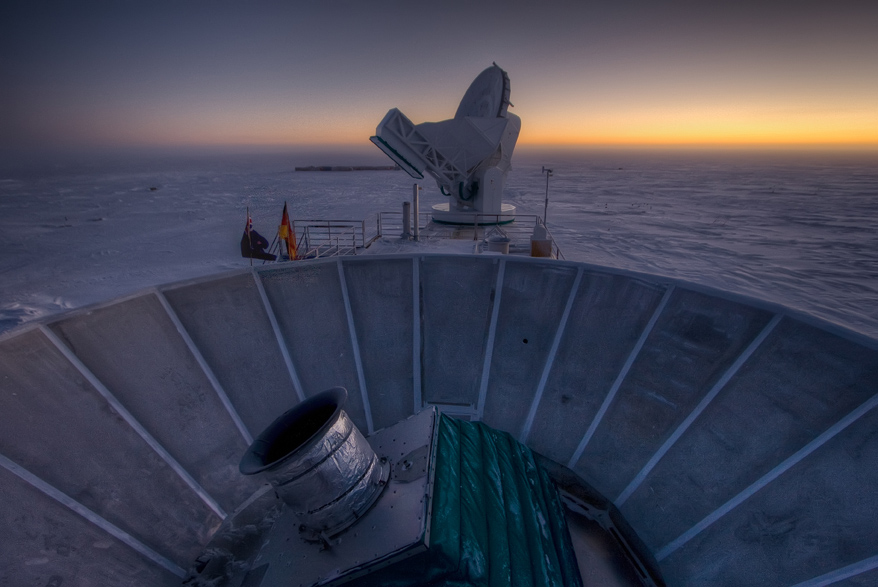Image List
-

Note: A correction has been added to this press release.
 
Gravitational waves from inflation generate a faint but distinctive twisting pattern in the polarization of the cosmic microwave background, known as a "curl" or B-mode pattern. For the density fluctuations that generate most of the polarization of the CMB, this part of the primordial pattern is exactly zero. Shown here is the actual B-mode pattern observed with the BICEP2 telescope, which is consistent with the pattern predicted for primordial gravitational waves. The line segments show the polarization strength and orientation at different spots on the sky. The red and blue shading shows the degree of clockwise and anti-clockwise twisting of this B-mode pattern.
BICEP2 Collaboration -

Graduate student Justus Brevik tests the BICEP2 readout electronics.
Steffen Richter (Harvard University) -

The BICEP2 telescope's focal plane consists of 512 superconducting microwave detectors, developed and produced at NASA's Jet Propulsion Laboratory.
Anthony Turner (JPL) -

The sun sets behind BICEP2 (in the foreground) and the South Pole Telescope (in the background).
Steffen Richter (Harvard University)